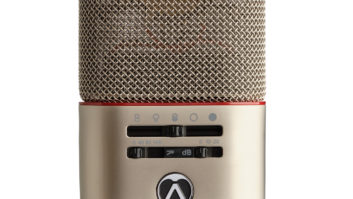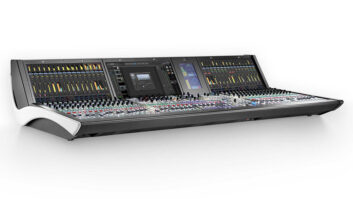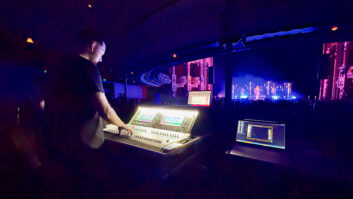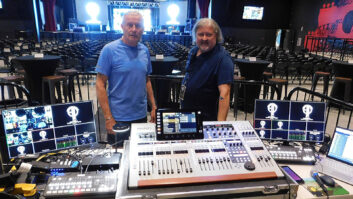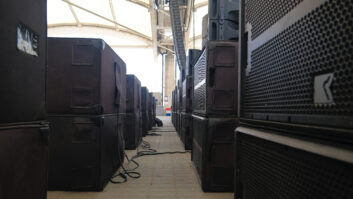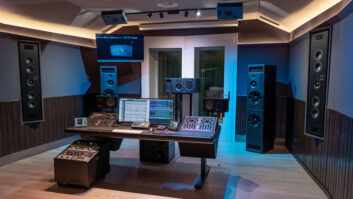Bochum, Germany (January 10, 2020)—One of the largest and most notable drama theatres in Germany, Schauspielhaus Bochum recently completed a major installation, which included a major audio renovation, ranging from the placement of new digital network technology across all of its venues, to the addition of multiple Allen & Heath dLive systems.
Schauspielhaus Bochum sports a capacity of 811 seats, while its second theatre, Kammerspiele, holds 400 people. 28-year veteran technical director Christoph Bonk explained, “We offer many different genres—classical theatre and musicals but also concerts, so we have to be very flexible in the sound department. We realized that our workflow wasn’t up-to-date anymore and we’ve been looking for the perfect solution for this theatre to address that. We needed flexibility, redundancy, good sound and wanted to be futureproof.”
With that in mind, the theater turned to Allen & Heath, and now its two main venues deploy three dLive surfaces each: an S7000, S3000 and C1500 in the Main Theatre and an S7000, C3500 and a C1500 in the Kammerspiele, plus various MixRacks and stage boxes, which are connected via CAT and fiber networks. The theatre also uses Qu series mixers in its smaller spaces and for receptions or speeches.
Audiotonix Acquired by Ardian
“For larger or more complicated plays, we sometimes work with two sound engineers and surfaces,” says Bonk. “One engineer mixes the actors’ microphones, the other looks after the playback system. The most important features for us are fast access to the sound parameters and effects and a customizable surface. The integration of stage boxes into the network is very easy and we can reach each position on stage easily by just pulling a CAT cable – there’s no need for heavy, complicated multicore cables anymore. Our 16 wireless microphones are connected digitally using AES/EBU.”
By using a very similar setup at the different venues, the theatre can react changes in audience reception and can move a play quickly from one venue to the other. “Each engineer can save a show including all channel processing and effects on a USB stick, go to another venue, load it there and continue working on the play,” says Bonk. “We don’t have to reprogram everything when moving between venues, which saves a lot of time.”
A crucial part for a theatre mixing system is the number of auxes for managing loudspeakers: “It’s very important for us to assign our speakers in a flexible way,” says Bonk. “At the moment, we use 47 auxes in the Main Theatre, 28 at Kammerspiele, plus monitor speakers and sound boxes for special effects. With dLive, we can address each speaker individually. We also laid the foundation for surround sound, which will most likely become more important in the near future.”
Allen & Heath • www.allen-heath.com

